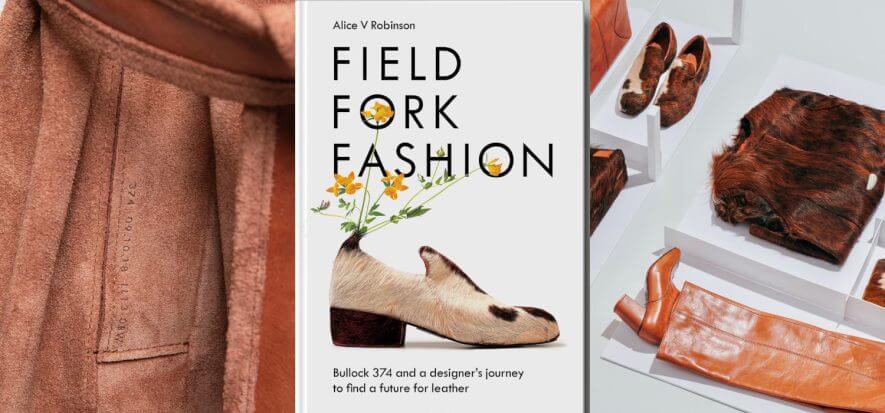“In 2017, the debate was binary: should we view leather negatively because it is linked to animal husbandry?”. Alice V Robinson, an English graduate of the Royal College of Art in London, decided to take a cultural and entrepreneurial route to explain that the answer to the question does not lie in Manichean positions, but in understanding the dynamics between animal husbandry and the tanning supply chains. Because when one poses the argument in binary terms (i.e. yes/no), one runs the risk of going astray. “You don’t understand the nuances”, she tells Vice, “agricultural practices are different in each case, and therefore the impact on the environment, which is also positive, is also variable”.
For this reason, in 2019 Robinson bought a young bull (bullock 374) still alive from the breeder and made the 374 collection with its leather. During the presentation at the Victoria Albert Museum in London, she offered refreshments made from the meat of the same bovine, while on the basis of the experience she wrote the book Field Fork Fashion, and founded in 2022 with a partner British Pasture Leather, a company that supplies tracked hides from sustainable British farms.
A bull to explain leather and tanning
Robinson was educated in London, but is originally from Shropshire, an agricultural region in the East of England. It was her roots in an area of cultivators and farmers that made her realise how wrong the demonisation of animal materials was. “Because leather is a waste product of animal husbandry”, she acknowledges with Vice, but the problem is that it comes to the attention of designers often “anonymously”, i.e. without a wealth of information about its history and journey. This is why she bought for 1,100 pounds a bull directly from a trusted breeder, whose practices she knew to be good, and whose company she knew to be serious. To show those calling for a ban on leather that the sustainable effort is not to repudiate a material, but to structure a qualified supply chain.
The value of traceability
“I want to connect leather to the landscape, to the farming community, to the food it comes from”, are Robinson’s words. “For a designer who wants to choose the materials with which to work and with which to make products under his or her own name, this connection is difficult to achieve”. Engaging in direct dialogue with the fashion system is also an incentive for virtuous farms. “We want to build a system”, the designer concludes, “that enhances the value of raw materials from quality farms to support positive practices on the ground”.
Read also:











